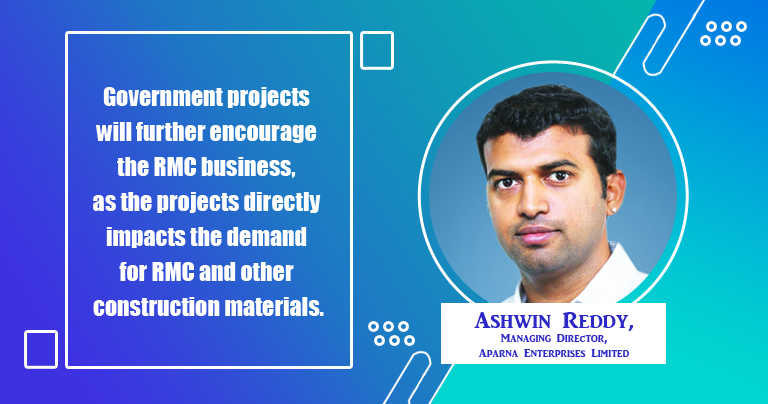Ashwin Reddy, Managing Director, Aparna Enterprises Limited. In An interview with B2B Purchase.
What is your outlook for construction and infrastructure projects in the coming years?
The construction industry is reviving very quickly from the ill effects of lockdowns imposed due to the COVID-19 virus spread. Fortunately, the third wave of the corona virus could not create much disturbance to the economy as compared to its predecessors. The current economic environment, coupled with the government’s focus on boosting infrastructure, looks very promising for the construction, infrastructure, and building materials industries. The overall demand is also seeing an increase thanks to the resumption of construction projects across regions. Other construction activities are also resuming gradually. As mentioned earlier, infrastructure development is a big driver of this demand, and the government’s thrust on infrastructure development has helped the industry to recover lost ground. Additionally, private construction projects have also resumed operations in full swing, especially as the third wave did not greatly impact the economy. Several government projects are still awaiting a nod for resumption from the concerned departments. The actual demand can only be quantified once these projects resume construction activities. The outlook for the industry looks good so far, and we hope to keep this momentum throughout the years to come.
With the government focusing on increasing smart cities, which sectors and regions are the major demand drivers?
Due to the increase in the number of residential real estate projects and the government’s thrust towards infrastructure development, RMC, in particular, is a material that has seen a significant rise in demand. The ongoing pandemic has solidified the importance of owning a home in the minds of consumers. Real estate activity has been steadily growing, and as an extension of it, so has the building materials and construction segment. The launch of numerous ambitious projects like the Smart Cities Mission, the Housing for All 2022 scheme, etc., will provide a muchneeded boost for the industry, as all these initiatives will need supplies of RMC and other construction materials. Additionally, with the recent budget announcing several infrastructural initiatives, the government expressed their interest in giving the required boost to construction and allied industries. With such support, both the residential and commercial sectors can forecast a decent amount of growth in upcoming years. This growth seems to be spanning across both tier 1 and tier 2 cities. Though these changes will take some time to show effect, the market already has a positive sentiment, which propels overall growth in the industry.
How are coal and energy prices impacting product pricing and overall sales?
The RMC industry heavily relies on cement as its key ingredient. Any fluctuation in cement prices has a direct influence on RMC product prices. As coal and energy prices affect cement prices, they indirectly affect RMC prices.
Are there any new market trends that you foresee driving sales in the near future?
More and more projects are opting for ready-mixed concrete. The consistency, quality, and ease with which RMC can be delivered are unparalleled. When it comes to cement mix for construction, most professional construction companies use ready-mixed concrete for their residential and commercial projects. However, RMC is witnessing steady growth in the retail sector also, as many households are using ready mixed concrete in their construction.
Cookie Consent
We use cookies to personalize your experience. By continuing to visit this website you agree to our Terms & Conditions, Privacy Policy and Cookie Policy.
















